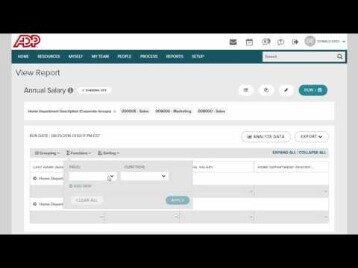Period Costs vs Product Costs: What’s the Difference?

Knowing the true costs of development can help you determine what features to build, whether for an MVP or for your next major update. Customer research may be the most important step in building and maintaining any product. Many product managers and stakeholders think they know what the customer wants.

However, it may pay off in the long run if they deliver high-quality code. Some cost-saving measures, like hiring junior developers, may result in several issues later on in the development process. With this information, you can make informed decisions about pricing strategies, potential profitability, and areas to optimize costs during the development process.
What is included?
Period costs are calculated by identifying costs classified as period costs. If that reporting period is over a fiscal quarter, then the period cost would also be three months. If the accounting period were instead a year, the period cost would encompass 12 months. Before discussing the differences between these costs, it is crucial to study both individually. Point-of-care tests can lower health-care costs, reduce waiting times, speed up initiation of and increase the accuracy of treatment, and improve patient follow-up. The purpose of doing so is a more accurate representation of information.
When preparing financial statements, companies need to classify costs as either product costs or period costs. We need to first revisit the concept of the matching principle from financial accounting. The difference between period costs vs product costs lies in traceability and allocability to the business’ main products and services. Easily traceable costs are product costs, but some product costs require allocation since they can’t be traced. Otherwise, costs that can’t be traced or allocated to products and services are classified as period costs or costs that are attributed to the period in which they were incurred.
LogRocket generates product insights that lead to meaningful action
Most period costs are fixed because they don’t vary from one period to another. Because product and period costs directly impact your financial statements, you need to properly categorize and record these costs in order to ensure accurate financial statements. The type of labor involved will determine whether it is accounted for as a period cost or a product cost. Direct labor that is tied to production can be considered a product cost. However, other labor, such as secretarial or janitorial staff, would instead be period costs.
Overhead, or the costs to keep the lights on, so to speak, such as utility bills, insurance, and rent, are not directly related to production. However, these costs are still paid every period, and so are booked as period costs. Product costs are often treated as inventory and are referred to as “inventoriable profit loss ratio definition, formula, how it works costs” because these costs are used to value the inventory. When products are sold, the product costs become part of costs of goods sold as shown in the income statement. Utility bills, rent, insurance and all other costs not directly related to production are booked as period costs.
Fresh Del Monte Produce Inc. reports strong quarter – The Packer
Fresh Del Monte Produce Inc. reports strong quarter.
Posted: Wed, 02 Aug 2023 17:33:27 GMT [source]
It is important to understand through the accrual method of accounting, that expenses and income should be recognized when incurred, not necessarily when they are paid or cash received. The costs that are not classified as product costs are known as period costs. These costs are not part of the manufacturing process and are, therefore, treated as expense for the period in which they arise. Period costs are not attached to products and the company does not need to wait for the sale of its products to recognize them as expense on income statement.
How to Calculate Period Cost
If you manufacture a product, these costs would include direct materials and labor along with manufacturing overhead. Most of the components of a manufactured item will be raw materials that, when received, are recorded as inventory on the balance sheet. Only when they are used to produce and sell goods are they moved to cost of goods sold, which is located on the income statement.

Instead, these expenses are incurred and recorded in a lump sum for the whole business entity. Some companies have a regulation to transfer some periodic costs to the product costs as a percentage of each period cost. All types of costs are used to prepare the income statement, cash flow, and balance sheet. However, the handling of all costs in each financial statement is different. In this article, we will differentiate between the product costs and period costs for any business entity. As shown in the income statement above, salaries and benefits, rent and overhead, depreciation and amortization, and interest are all period costs that are expensed in the period incurred.
Product cost vs period cost
They’re often broken down into subcategories of fixed and variable costs, which can be used for calculating things like the break-even point. When a company sells its products, the product costs form part of the cost of goods sold (COGS) on the income statement. Product costs are those related directly to the cost of production, including things like direct labor, materials, and factory overhead.
There is little difference between a retailer and a manufacturer in this regard, except that the manufacturer is acquiring its inventory via a series of expenditures (for material, labor, etc.). What is important to note about these product costs is that they attach to inventory and are thus said to be inventoriable costs. The product costs measured and recorded in the company’s records are also used to prepare the financial statements. Adding product costs to the financial statement is required in both IFRS(International Financial Reporting Standards) and GAAP(Generally Accepted Accounting Principles). Whether it’s a one-off product or a SaaS subscription, understanding product cost is crucial for any business to succeed. Breaking down your costs into materials, labor, overhead, and other expenses reveals insights into where your money is going.
The formula for period costs is simply adding up all costs that are classified as period costs. Classification of cost into periods and products is generally for financial accounting purposes. A proper determination of revenues and expenses must be based on a well-defined distinction between Period cost and Product cost. All components are added together and recorded as part of inventory. In other words, product costs are expenses that are initially “parked” in the balance sheet and recorded only as an expense (COGS) upon sale. If the cost didn’t pass the traceability test, it is an overhead cost.
However, monitoring and understanding the trends of new STIs in low- and middle-income countries (LMIC) are hindered by limited access to diagnostic tests. “Our new guidance can help make low-cost point of care tests for STIs more accessible, enabling improved data collection and quality delivery of STI services for people in need.” Note that these costs will also be calculated differently during different parts of a lifecycle.
- Speaking of financial statements, it’s important that you take the time to review your financial statements on a regular basis.
- You may find yourself in a situation where you determine your production costs are more than you desire.
- We need to first revisit the concept of the matching principle from financial accounting.
- Easily traceable costs are product costs, but some product costs require allocation since they can’t be traced.
- Salary paid for the production floor manager is classified as a product cost since the cost is incurred for actual production of the product.
Moreover, period costs are expenses in the income statement of the period in which they were incurred. The main difference between product and period costs is that the former is only counted when products are produced or acquired and the latter accrue over time. As such, businesses with no product costs might still have period costs to worry about. All the period costs are recorded in the income statement and cash flow statement of the company. These costs are recorded in accounting books as incurred with the same name.
Best Account Payable Books of All Time – Recommended
Examples of period costs are general and administrative expenses, such as rent, office depreciation, office supplies, and utilities. Product costs (direct materials, direct labor and overhead) are not expensed until the item is sold when the product costs are recorded as cost of goods sold. Period costs are selling and administrative expenses, not related to creating a product, that are shown in the income statement in the period in which they are incurred. Period costs include selling expenses and administrative expenses that are unrelated to the production process in a manufacturing business.
Clorox Reports Q4 and FY23 Results, Provides FY24 Outlook – investors.thecloroxcompany.com
Clorox Reports Q4 and FY23 Results, Provides FY24 Outlook.
Posted: Wed, 02 Aug 2023 20:20:59 GMT [source]
Depending on the company, product managers may or may not determine the pricing strategy for the product. Product costs are treated as inventory (an asset) on the balance sheet and do not appear on the income statement as costs of goods sold until the product is sold. Period cost vs Product cost is nothing but the expenses in the company, and any management of a company wants a separate measurement cost because any business cost is a major concern. The cost of any product is classified into Period cost and Product cost based on its relation with the products.
